This post will help you how to remove leftover files after uninstalling programs in Windows 11/10. Uninstalling a program or software is pretty simple in Windows OS. You can uninstall a program using Command Prompt, Settings app, Control Panel, and many other ways. But, when you remove a program from your system, then even after successful uninstallation of that program or application, its leftovers or remnants are left behind on your system. Those leftovers (or dead entries) can include empty folder(s), Registry entries, and files which are of no use.
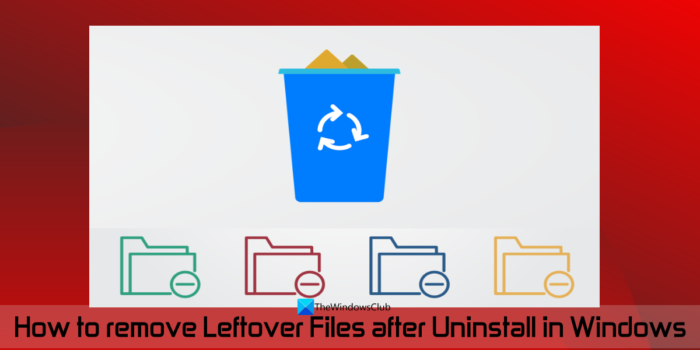
So, if you want to completely remove a program, you have to remove its leftover data as well. Now that can include multiple areas to cover. This post will help you access all the possible locations and ways to clear leftover files after a program deletion.
How to remove Leftover Files after Uninstall in Windows 11/10
After uninstalling a program, you can use the following effective ways to remove leftover files of the program on a Windows 11/10 computer:
- Check the Program Files or Program Files (x86) folder
- Check the AppData folder
- Remove Registry entries of the program
- Remove Temporary files from your system
- Use a third-party tool.
Let’s check all these options one by one.
1] Check the Program Files or Program Files (x86) folder
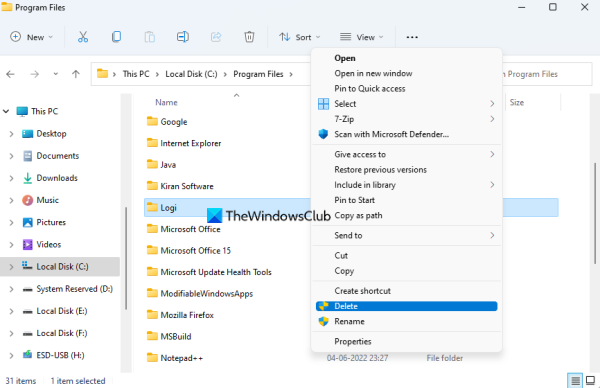
Program Files and Program Files (x86) folders are two standard locations where a third-party application or program is installed by default in Windows OS. If you install a 64-bit application, its data will be stored in the Program Files folder and the 32-bit programs are stored in the Program Files (x86) folder. So, once you have uninstalled a program, you should check the Program Files or Program Files (x86) folder (depending on the installation location) in the C drive or the drive where you have installed Windows.
There, check if some folder for that program is still there. If yes, delete that program’s folder (including sub-folders and files). You might need to force delete files and folders of that program if files/folders are locked. Once you have done that, restart your Windows 11/10 computer.
Read: Change default Program Files installation directory location
2] Check the AppData folder
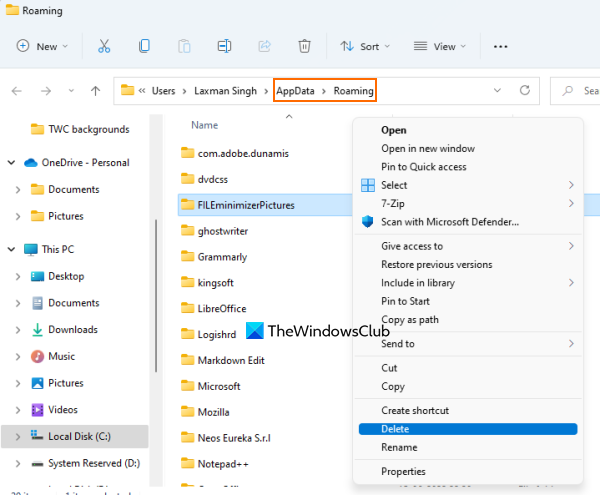
AppData folder is another location where the leftovers of the uninstalled software can be stored. So, you need to access the AppData folder and delete the folders related to a program that you uninstalled. AppData folder includes a Roaming name folder where the residual files of programs are present. To access this folder:
- Click on the Search box or open the Run Command (Win+R) box
- Type %appdata%
- Hit the Enter key
- The Roaming folder stored under the AppData folder will open. There, you will see different folders for third-party programs. Look for the folder of the program that you removed
- Select the program folder, and delete it.
3] Remove Registry entries of the program
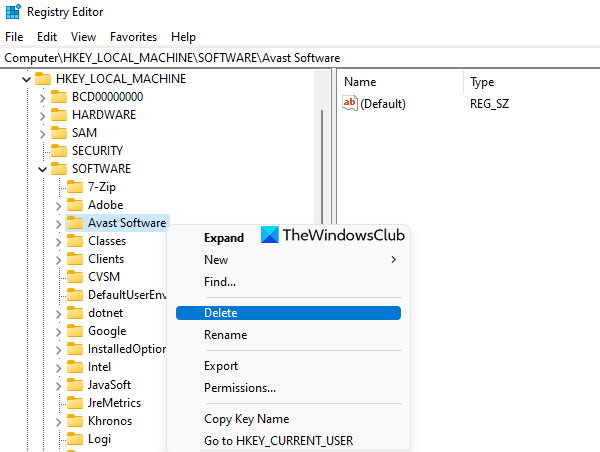
Whenever a program or software is installed, multiple Registry entries are created for it. And, when you uninstall a program, there are chances that some Registry entries that include Registry keys, values, etc., remain left. So, you need to remove the Registry entries of that program. For this, you need to access the different locations.
Before doing that, you should first take a backup of the Windows Registry as it includes the crucial settings related to your Windows OS. If anything goes wrong, the Registry backup will be there to fix it.
After doing that, open the Registry Editor on your Windows 11/10 computer. You can type regedit in the Search box to open it.
Now, in the Registry Editor, check the following locations:
HKEY_USERS\.DEFAULT\Software
HKEY_CURRENT_USER\Software
HKEY_LOCAL_MACHINE\SOFTWARE
Access and expand these Registry locations one by one and look for the Registry key(s) with the name of the program that you uninstalled. Delete that key from Windows Registry. If you aren’t able to delete those keys, then you first need to take control and ownership of the Registry keys, and then you will be able to delete them without any issue.
Once it is done, restart the system.
Also read: How to uninstall programs using Registry in Windows
4] Remove Temporary files from your system
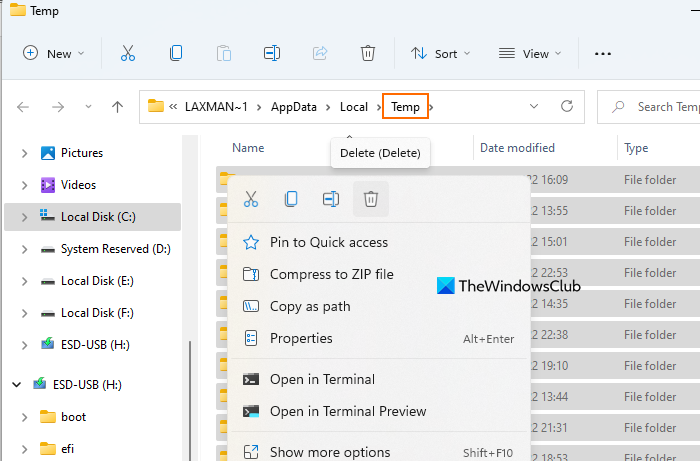
It’s the last option to use. You need to make sure that there aren’t any temporary files of the uninstalled program left. For this, remove temporary files from your Windows 11/10 computer. To remove leftover files after uninstalling software, you can use the Settings app, Disk Cleanup, Command Prompt, and many other ways to do this. But, if you need a simple and faster way to delete temporary files, follow these steps:
- Type %temp% in the Search box of Windows 11/10
- Hit the Enter key to open the Temp folder
- In the Temp folder, select all files
- Delete them.
5] Use a third-party tool
This solution is optional but can be helpful when you need to save the manual work. If you want, you can use some third-party tool that can help you remove leftovers, including Registry entries of the programs. There exist some best free uninstaller software for Windows 11/10 like Revo Uninstaller, IObit Uninstaller, etc., that help to delete all the remnants of a program so that there shouldn’t be anything left related to that particular program.
That’s all! Hope this is helpful.
Related: Cannot install or uninstall programs in Windows 11
How do I get rid of leftover files after uninstalling Programs in Windows 11?
If you want to get rid of leftover files after uninstalling programs in your Windows 11 computer, then you need to look for its Registry entries, check the AppData folder, Program Files folder, etc. You also need to delete temporary files of those programs. All these options to completely remove a program from a Windows 11/10 PC are covered in this post with detailed information. Check them.
How do I remove incomplete uninstalled Programs?
Though you can easily remove programs from your system, the uninstallation process may not be completed because the leftover entries (like a DLL file, Registry key, and Registry values like DWORD (32-Bit) Value, String Value, empty folders, etc.) remain there on your PC. So, to remove incompletely uninstalled programs, you need to delete their entries from Windows Registry, AppData folder, etc.
Read: Free Shortcut Scanner Tools to remove Broken Shortcuts in Windows PC
How do you remove a program that is already uninstalled?
Sometimes, uninstalling a program normally is not enough. It is so because even if a program is already uninstalled from the system, its temporary files, Registry keys, etc., can still be there. Therefore, you should access all the possible locations where the residual files of a program are stored and delete those leftovers. Read this post that covers all the sections with a simple explanation to completely uninstall programs from a Windows 11/10 system.
Read next: Remove dead Startup programs or Invalid entries from Task Manager.